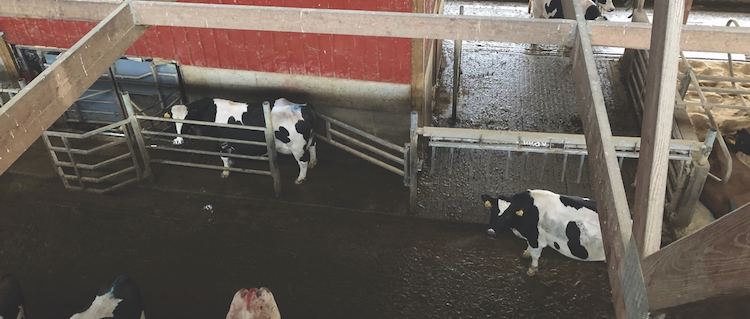
One benefit of automated or robotic milking systems is that cows are not brought to a holding area prior to milking. Instead, cows are free to visit the robot when they choose. Theoretically, this would lead to less time spent waiting to be milked, but data from an observational study showed otherwise.
Laura Solano, a dairy comfort and welfare expert at Lactanet, explained how they tracked the length of time cows waited to be milked in two barns: a guided flow robotic system and a free flow system. In her presentation during the Dairy Cattle Welfare Council’s Symposium held in Fort Worth, Texas, she noted that waiting times in both these barns varied greatly between cows.
In the guided flow system, cows waited an average of 30 minutes in the commitment pen per visit, with a range from two seconds to 5.5 hours per visit. The average time spent waiting per day was about 90 minutes, but some cows waited 3.5 hours per day and one cow spent almost eight hours waiting to be milked.
In the free flow barn, the average wait time was 15 minutes per visit, but again, the variation between cows was significant. Cows waited to be milked anywhere from three seconds to almost four hours for one visit. Cows approached the waiting area an average of six times per day, with a range of two to 14 times per day. Total waiting time, on average, was about one hour and 20 minutes, but cows waited anywhere from five minutes to more than five hours per day to be milked.
The amount of time spent waiting to be milked had a direct impact on time spent lying down. Cows that waited more than two hours to be milked per day spent one hour and 40 minutes less lying down than other cows.
Solano shared several strategies that can help reduce waiting times in robotic milking systems. The first is to implement grouping strategies if herd size allows. First parity cows were most often displaced when waiting to be milked and spent more time waiting to be milked. When possible, house first-lactation cows separate from more mature animals.
Training heifers to use the robots is another helpful strategy. Solano said that training leads to not only more milkings per day but also more milk yield in these younger cows.
The next strategy involves the robot’s entry way. Gating at the entry way that protects the neck and shoulder area of the next cow in line can help discourage dominant cows from displacing subordinate cows that are waiting to be milked.
Similarly, Solano recommended that cows exit the parlor away from the robot’s entrance so they can’t interfere with others waiting in line. This further prevents boss cows from displacing less dominant ones.
Finally, Solano said to pay attention to the robot stocking rate. An appropriate stocking density helps lessen the dominance effect, reduces standing time, and cuts back on the number of failed robot visits.
Solano said these strategies help reduce standing time, which is part of a lameness prevention plan. Fewer lame cows in an automated milking system means more frequent milking, fewer fetch cows, and better overall animal well-being.








